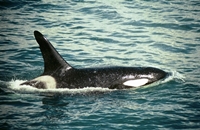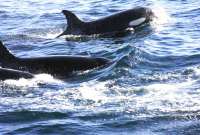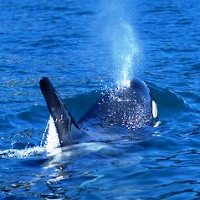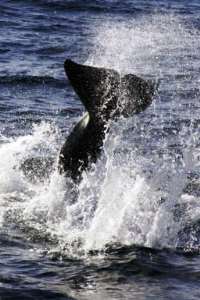



STATUS: The total population of orcas is unknown but there are some regions that are more populous than others. There are no true enemies of the orca but some regions are being affected. They are also not truly affected by whaling. The main threat to orcas is man-made chemicals which are killing the fish they and their other prey eat. The fish eat the toxin and become depleted. The seals and sea lions eat the fish and become depleted. The orcas eat the fish or seals and sea lions and become affected. When they have no food, they used their fat reserves to survive which increases the potency of the toxins. They are also threatened by pollution, oil spills, noise, and boat conflicts.